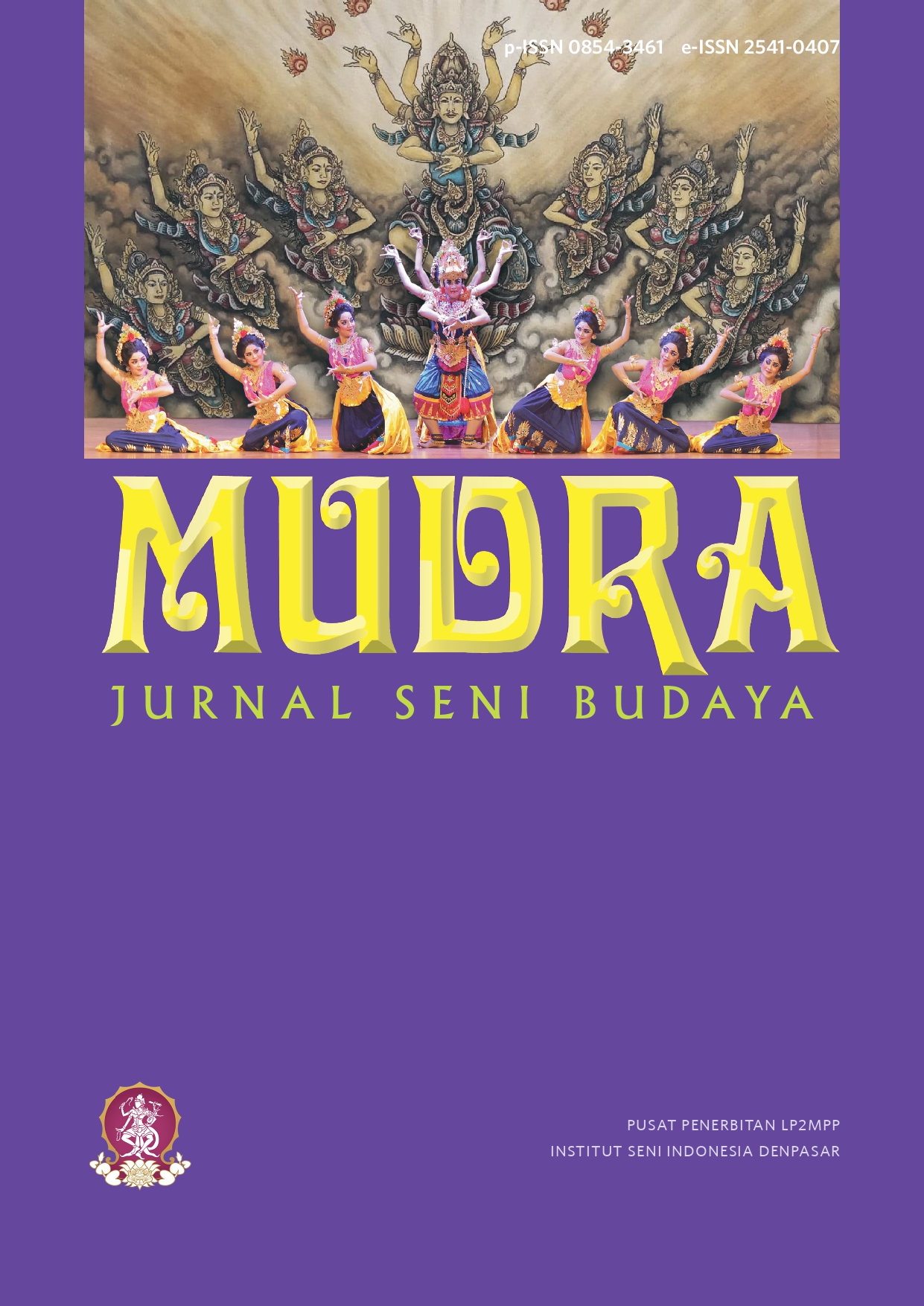Processing Purple Sweet Potato Peel as Alternative Material of Textile and Fashion Products with Circular Economic Principles
DOI:
https://doi.org/10.31091/mudra.v38i3.2020Keywords:
Fashion, Textile, Purple Sweet Potato, Circular EconomyAbstract
The textile and fashion industries are the most polluting industry in the world. This is because the industries driven by the fashion trend which is rapidly change. During the production and distribution process, the fashion and textile industries produce waste that can damage the air, water and soil. Moreover, the industries use non-renewable materials, and the life span of their product is short, eventually it will end up on the landfill. The application of circular economic principles on the textile and fashion industry is a step in an effort to reduce the level of environmental pollution. In this study, the principles that applied are, using biomaterial, obtain it from local resources, producing less waste, and after use the material can be naturally decomposed. The method used in this research is a qualitative method with an experimental approach. Data collected through a several exploration stages, processing purple sweet potato peel into composite materials. Processing purple sweet potato peel in this study is to produce an alternative raw material for the industries, so that they can use a more environmentally friendly material. Using biomaterials also can adding value to the textile and fashion products, so it can foster awareness to the consumer, in aim to make a systemic social behavioral change. The output of this study is the design of fashion products made of composite materials from purple sweet potato peel which are carried out using digital simulation sketches. The design was made based on the consideration of the character and potential of the composite material from the results of a series of experimental processes, so that the product sketch made is an accessory product consisting of earrings with a relatively small size.
Downloads
References
Andriana, Y., F. (2021). “Eksperimen Material Alam untuk Mengasah Kreatifitas” in Ragam Pemikiran dalam Bidang Seni dan Desain: Telaah Filosofis, Pengembangan Kajian, dan Praksis. Padang: CV. PACE. 2021, pp. 69-80
Carr, D. J., Gotlieb, M. R., Lee, N. J., & Shah, D. V. (2012). Examining Overconsumption, Competitive Consumption, and Conscious Consumption from 1994 to 2004: Disentangling Cohort and Period Effects. Annals of the American Academy of Political and Social Science, 644(1), 220–233. https://doi.org/10.1177/0002716212449452
Dan, M. C., & Østergaard, T. (2021). Circular Fashion: The New Roles of Designers in Organizations Transitioning to a Circular Economy. Design Journal, 24(6), 1001–1021. https://doi.org/10.1080/14606925.2021.1936748
Dewayanti, K. R., & Andhini, G. K. (2023). Women’s Ready-to-Wear Collection with the Influence of Cottagecore. Mudra Jurnal Seni Budaya, 38(1), 84–92. https://doi.org/10.31091/mudra.v38i1.2232
Diyah Sri Widari, D. A., & Prasiasa, D. P. O. (2022). Nilai Estetika Lokal dan Nilai Ekonomi Lokal Dalam Pengelolaan Destinasi Pariwisata di Bali Utara. Mudra Jurnal Seni Budaya, 37(1), 60–68. https://doi.org/10.31091/mudra.v37i1.1883
Elander, M., Watson, D., & Gylling, A. C. (2017). Evaluation of business models for increased reuse, collective use and prolonged life time of textiles. In Mistra Future Fashion (p. 26). https://mistrafuturefashion.com/wp-content/uploads/2017/11/Mistra-report-D3.3.3.1.-Evaluation-of-business-models.pdf
European Environment Agency. (2019). Textiles and the environment in a circular economy. European Topic Centre on Waste and Materials in a Green Economy, 6(November), 1–60.
Fatimatuzahro, D., Tyas, D. A., & Hidayat, S. (2019). Pemanfaatan Ekstrak Kulit Ubi Jalar Ungu (Ipomea batatas L.) sebagai Bahan Pewarna Alternatif untuk Pengamatan Mikroskopis Paramecium sp. dalam Pembelajaran Biologi. Al-Hayat: Journal of Biology and Applied Biology, 2(1), 1. https://doi.org/10.21580/ah.v2i1.4641
Harmsen, P., Scheffer, M., & Bos, H. (2021). Textiles for circular fashion: The logic behind recycling options. Sustainability (Switzerland), 13(17). https://doi.org/10.3390/su13179714
Hendriyana, H., Nurhidayat, M., & Handayani, W. (2022). Product Design Strategy Using Nirmana Dwimatra Concept ( Implementation in the Learning Process in Product Design Student ’ s of FIK Telkom University ). Mudra Jurnal Seni Budaya, 37(1), 119–128.
Hornbuckle, R. (2018). What Else Do We Know? Exploring Alternative Applications of Design Knowledge and Skills in the Development of Circular Textiles. Journal of Textile Design Research and Practice, 6(1), 23–41. https://doi.org/10.1080/20511787.2018.1434745
Jönsson, C., Wei, R., Biundo, A., Landberg, J., Schwarz Bour, L., Pezzotti, F., Toca, A., M. Jacques, L., Bornscheuer, U. T., & Syrén, P. O. (2021). Biocatalysis in the Recycling Landscape for Synthetic Polymers and Plastics towards Circular Textiles. ChemSusChem, 14(19), 4028–4040. https://doi.org/10.1002/cssc.202002666
Maity, S., Singha, K., Pandit, P., & Ray, A. (2020). Circular Economy in Fashion and Textile From Waste. In Recycling from Waste in Fashion and Textiles (Issue July). https://doi.org/10.1002/9781119620532.ch11
Qinah, E. (2009). Pengaruh Konsentrasi Gula Pasir dan Tepung Ketan Terhadap Sifat Kimia, Organoleptik serta Daya Simpan Dodol Ubi Jalar Ungu. In Skripsi Fakultas Kesehatan Masyarakat Universitas Sumatera Utara.
Siderius, T., & Poldner, K. (2021). Reconsidering the Circular Economy Rebound effect: Propositions from a case study of the Dutch Circular Textile Valley. Journal of Cleaner Production, 293, 125996. https://doi.org/10.1016/j.jclepro.2021.125996
Wahida, A., & Fuad, F. R. (2022). Recycling Plastic Waste For The Development of Souvenir Products Special For Surakarta City. Mudra Jurnal Seni Budaya, 37(3), 271-280
https://www.kemenperin.go.id/artikel/20641/Industri-Pakaian-Jadi-Catatkan-Pertumbuhan-Paling-Tinggi cited on June 28th 2022 at 21:50 WIB
Downloads
Published
How to Cite
Issue
Section
License
Copyright (c) 2023 Yunita Fitra Andriana, Rizka Ramayanti, Nurul Aisyah Rachmawati

This work is licensed under a Creative Commons Attribution-NonCommercial-ShareAlike 4.0 International License.
- Copyright on any open access article in a journal published by Mudra Jurnal Seni Budaya is retained by the author(s).
-
The Creative Commons Attribution License 4.0 formalizes these and other terms and conditions of publishing articles.






